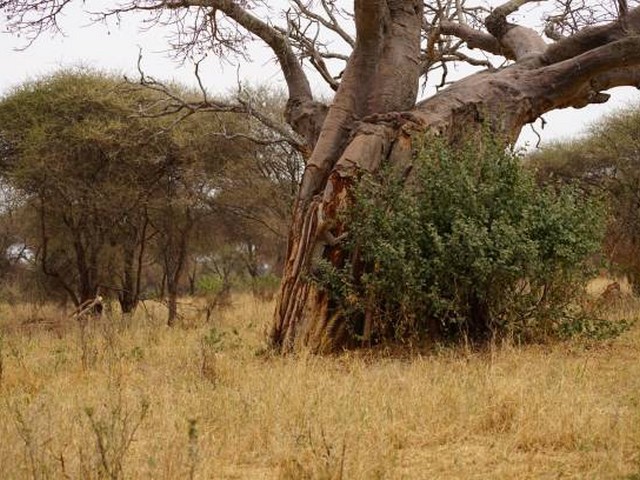Learn About the Ancient Trading Routes Around Kilimanjaro
Welcome to a journey through time where winds echo the steps of traders and explorers around the majestic Mount Kilimanjaro! As a beacon of adventure, Kilimanjaro doesn’t just offer breathtaking views from its summit but also a rich tapestry of history woven through its ancient trading routes. At Kilimanjaro Centre for Trekking and Ecotourism (KCTE), we invite you to delve into the vibrant past that shaped the surrounding regions and the mountain itself. So pack your curiosity along with your hiking boots, as we embark on a historical adventure!
Unveiling Kilimanjaro’s Historical Trade Paths
Long before Kilimanjaro became a prime destination for mountaineers from across the globe, it was pivotal in ancient trade. The Chagga people, native to this region, were not just skilled farmers but also adept traders. They bartered their surplus produce such as bananas, taro, and later, coffee, for goods from neighboring tribes and distant lands.
In the Footsteps of Giants: The Trade Routes
The routes skirting Kilimanjaro served as conduits for the exchange of not only goods but also culture and technology. These pathways, trodden by countless feet, were witness to the flow of commodities like ivory from the interiors of Africa to the Swahili Coast. Textiles, beads, and iron tools made their way back, enriching local communities.
Marangu Route: The Path of Life
Particularly notable among these is the Marangu Route. Known traditionally as the ‘Coca-Cola Route,’ its historical significance is profound. It was one of the main arteries for commerce, connecting the mountainous interior with the lower lying areas. Today, it serves as one of the most popular paths for climbers, offering a glimpse into both the natural and cultural heritage of Kilimanjaro.
Machame Route: The Trade Backbone
Similarly, the Machame Route, often termed the ‘Whiskey Route,’ historically functioned as a robust trade link. It offered a more challenging traverse but rewarded travelers with its rich, verdant landscapes and the opportunity to interact with diverse ecological zones.
Cultural Exchange Along the Routes
As traders journeyed around Kilimanjaro, they carried not just physical goods but also stories, beliefs, and practices, which mingled with local traditions. This exchange helped cultivate a unique cultural landscape around Kilimanjaro, characterized by a rich mosaic of languages, art, and communal life.
Inter-tribal Trade and Influence
The interconnectivity of tribes such as the Chagga, Maasai, and Meru through these routes facilitated a cultural synthesis that is evident to this day in the customs, languages, and crafts of the Kilimanjaro region. The famous Chagga ‘Mbege,’ a traditional banana beer, is a fine example of a cultural artifact born from centuries of shared heritage.
Architectural Insights
The influence of Arab and Indian traders is visible in the architectural styles found in the old trading towns around Kilimanjaro. Carved doors and ornate balconies speak of a time when these towns were bustling bazaars handling goods from across the Indian Ocean.
Legacy of the Ancient Routes Today
Today, these ancient paths offer more than just a passage through stunning landscapes; they provide a living history lesson. Trekkers can experience firsthand the enduring legacy of the routes, exploring old trading towns and interacting with local communities whose lifestyles have evolved over millennia yet still retain much from the past.
Tourism and Preservation
At KCTE, we are committed to preserving the cultural and historical integrity of these routes. By promoting responsible ecotourism, we ensure that visitors not only learn about but also contribute to the sustainability of this magnificent region.
Ecological Impact and Conservation Efforts
Understanding the ecological impact of historical trade routes helps in the ongoing efforts to preserve Kilimanjaro’s diverse environments. The cultivation techniques introduced by traders have shaped local agriculture in ways that are sensitive to the mountain’s ecological zones.
Why Trek the Ancient Kilimanjaro Routes with KCTE?
Choosing KCTE for your Kilimanjaro adventure means more than just a trek. It’s about immersing yourself in the history, culture, and breathtaking nature of this legendary mountain. Our expert guides are skilled storytellers who bring to life the tales of ancient traders and modern heroes of Kilimanjaro.
Embark on Your Journey
Are you ready to walk the ancient trading routes of Kilimanjaro? To stand where traders once bartered goods and shared stories? Join us at Kilimanjaro Centre for Trekking and Ecotourism (KCTE) and become part of this timeless landscape. Book your climb with us today and step into a world of adventure that spans through time!
FAQs About Kilimanjaro’s Ancient Trading Routes
Q1: How difficult are the treks on these ancient routes?
A1: The difficulty varies with each route. For example, the Marangu Route is more accessible, while the Machame Route is more challenging. We cater to all levels of experience, ensuring a memorable and safe trek.
Q2: What is the best time to trek Kilimanjaro’s ancient routes?
A2: The best times are during the dry seasons, from June to October and from December to March. These months offer clearer paths and better visibility.
Q3: Can I interact with local communities during the trek?
A3: Absolutely! Interacting with local communities is a highlight of trekking Kilimanjaro’s routes. It provides a deeper understanding of the region’s culture and history.
Q4: What should I bring for a trek on these routes?
A4: Essential items include sturdy hiking boots, warm clothing, rain gear, and a good camera to capture the breathtaking landscapes. Don’t forget to bring a sense of adventure!
Q5: How do I book a trek on Kilimanjaro’s ancient trading routes?
A5: You can book directly through our website or contact us at Kilimanjaro Centre for Trekking and Ecotourism (KCTE). We offer various packages tailored to different needs and preferences.
Join us for an unforgettable journey into the heart of Kilimanjaro, walking the paths of ancient traders and modern adventurers alike. With KCTE, your adventure will be more than just a trek; it will be a profound journey through history and culture. Book your climb today!




